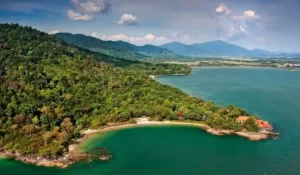Yellow Spring Road Japan: Where It Is & What Makes It Unique

Yellow Spring Road Japan is one of those places that you hear about in hushed, awe-filled tones, often sprinkled with words like “mysterious,” “serene,” and “spiritual.” If you’ve ever asked, “Where is Yellow Spring Road?” or Googled the phrase “yellow road Japan,” you’ve probably found yourself tangled in the wonder of it all. And why not? This winding, magical path in Nara Prefecture has a charm that pulls you in—whether it’s the way it changes with the seasons or its deep roots in Japanese culture and history. Here’s what makes Yellow Spring Road Japan such a wicked experience, and why you might just find yourself booking a ticket there after reading this.
Where Is Yellow Spring Road?
First things first: Yellow Spring Road is nestled in Japan’s Nara Prefecture, one of those places that’s an absolute gem in the country’s landscape. If you’ve heard of Nara, it’s the city where sacred deer wander freely through parks, and ancient temples stand like time capsules. But Yellow Spring Road isn’t just another picturesque Japanese trail—oh no, it’s a place soaked in history and spiritual meaning.
I didn’t exactly know where Yellow Spring Road was either before I went. It’s tucked away in the hills near Nara’s famous Todai-ji Temple, home to the Great Buddha (a statue that’s bigger than your apartment). The road’s name, “yellow spring road Japan,” comes from the golden-yellow blooms of forsythia flowers that cover the path in the spring. There’s something about it that makes the road feel almost otherworldly. Like you’re walking through the entrance of an ancient temple where the trees and flowers are holding secrets they’ve kept for centuries.
The Roots of Yellow Spring Road Japan
The history of Yellow Spring Road is, to be honest, a bit elusive. But that’s kind of what makes it cool. It’s like this beautiful enigma wrapped up in the lush hills of Nara. I’ve read that the road was likely used by pilgrims centuries ago who were making their way to Todai-ji Temple and other sacred Buddhist sites. It wasn’t just a physical journey; it was spiritual.
Picture this: Travelers would walk along the road, and it wasn’t just about getting to a temple. The road was seen as a sort of bridge between the human world and the divine. People believed that walking along the path itself was a spiritual ritual. Pretty mind-blowing, right? It makes you wonder how many souls have walked that same yellow path through the ages, seeking wisdom or enlightenment.
The name “Yellow Spring Road” seems to echo Japan’s deep connection to the changing seasons. Spring isn’t just a season—it’s a reminder that life is fleeting, always shifting, and always changing. Flowers bloom, and then they fade. That’s kind of the vibe you get when you walk here. It’s about embracing the moment, the beauty, and then letting go.
Why Yellow Spring Road Is So Unique
Alright, let’s get down to it. What makes this road so special? I mean, there are roads, and then there are roads with history, mystery, and a whole lot of nature. Yellow Spring Road Japan is in the latter camp, for sure. Here’s what I learned about the place that makes it so unique:
1. A Road Painted Yellow (Literally)
I’ll start with the most obvious thing: Yellow Spring Road blooms in a way that feels like nature’s own paintbrush was busy at work. Every spring, forsythia bushes flood the area with their golden-yellow flowers, and suddenly, the whole road looks like it’s been dipped in sunlight. Imagine walking under trees that are covered in these delicate yellow blooms. It feels like stepping into an impressionist painting—nature at its finest.
It’s not just a “pretty road,” either. The path looks different every season. In spring, it’s all bright yellows and greens. In summer? It’s lush and alive, with trees that provide a canopy of shade. Come autumn, you’re talking fiery reds and golds, like a whole forest dressed up for a festival. No matter when you visit, the road is always changing—and that’s the beauty of it.
2. Spiritual Significance: It’s More Than a Walk
Yellow Spring Road Japan isn’t just a pretty sight—it’s an experience. The road, in all its seasonal glory, has been a destination for pilgrims for centuries. And no, not just for the good Instagram photos. Pilgrims would make the trek along this road as part of a spiritual journey to Todai-ji Temple. It’s like they knew something we don’t—about walking for peace, mindfulness, and a deeper connection to life.
There’s something magical about walking this road. Maybe it’s the whispers of history that linger in the air. Or maybe it’s because the road’s winding path is lined with centuries-old temples, shrines, and stone statues, all there to remind you that you’re not just walking on a road—you’re walking through history. One step at a time.
3. Nature’s Rhythm: Everything Feels in Sync
The idea of “mono no aware” comes to mind when walking here. That’s the Japanese concept of the impermanence of things. You see it in the yellow flowers that bloom for only a short while, or in the way the trees change with the seasons. It’s about appreciating beauty before it fades. You could walk down the road every year and have a completely different experience, and that’s part of what makes it so special.
I always find myself thinking about the rhythm of the seasons when I visit places like this. Like, you’re in a moment, but you know it’s passing. A bit dramatic? Maybe. But honestly, walking on Yellow Spring Road gives you a sense of how everything is connected—how the world changes and keeps going, no matter what. I guess that’s a thought you don’t always get in a busy city. Just saying.
4. Architecture + Nature = Pure Harmony
I was blown away by how Yellow Spring Road combines the natural world with traditional Japanese architecture. Along the path, you’ll spot torii gates, shrines, and stone lanterns that make the journey feel like you’re walking through an ancient, sacred world.
I’ll admit, the first time I saw the torii gates set against the backdrop of trees, I was kind of lost for words. There’s just something about those iconic gates that scream “sacred” in the most peaceful way. It’s like nature and humanity have been intertwined here for centuries, and you get to experience both at once.
What to Expect When Visiting Yellow Spring Road Japan
Okay, if you’re considering making the trip to Yellow Spring Road Japan, there are a few things you’ll want to know. First of all, don’t expect just another hike. This place? It’s got stories to tell. It’s got layers of culture and history. I’m talking about the kind of place where you almost feel like you should be whispering, “Thank you,” as you walk.
1. Scenic Views That Will Knock Your Socks Off
One of the best parts about Yellow Spring Road is the views. You’re walking through hills and forests, with glimpses of temples and shrines popping up here and there. During the spring, the yellow flowers cover the landscape like a blanket of sunshine. It’s the kind of place where you find yourself stopping every few steps to snap photos—unless you’re me, and you forget your camera because you were too busy staring at the view.
No matter the season, the road looks hella picturesque, and that’s an understatement.
2. Temples & Shrines Galore
Let’s talk temples. Because there are many. The most famous is Todai-ji, where the Great Buddha resides. But the area around Yellow Spring Road has smaller shrines and temples that add to the spiritual vibe. These are quiet, often tucked away from the crowds, and give you the space to sit and reflect. I could sit on the stone steps of these shrines for hours, just taking it all in.
It’s honestly the perfect mix of beauty and calm. A blend of spirituality and nature that makes you stop and think: “Wow. How lucky am I to be here?”
3. Perfect for Meditation and Quiet Time
If you’re into mindfulness or meditation (or just need a break from the noise of daily life), Yellow Spring Road is perfect for that. I don’t know if it’s the natural sounds or the fact that you’re walking on centuries-old soil, but something about this road makes it feel like you’re in sync with the world around you. The path’s peacefulness seeps into your bones.
4. Local Culture & Handcrafted Goods
Once you’ve finished walking the road, head over to Nara’s nearby markets. You’ll find handmade crafts, pottery, and local goods—everything from traditional tea sets to intricately woven baskets. Stop by a tea house if you want to sip on matcha and unwind after your walk. Trust me, it’s a vibe.
Why Yellow Spring Road Is a Must-Visit Destination
So, why visit Yellow Spring Road Japan? Honestly, it’s more than just a road. It’s a journey. A spiritual journey, a historical one, and a natural one. Whether you’re there to appreciate the beauty of the changing seasons or to dive deep into Japan’s culture, Yellow Spring Road offers a unique experience.







